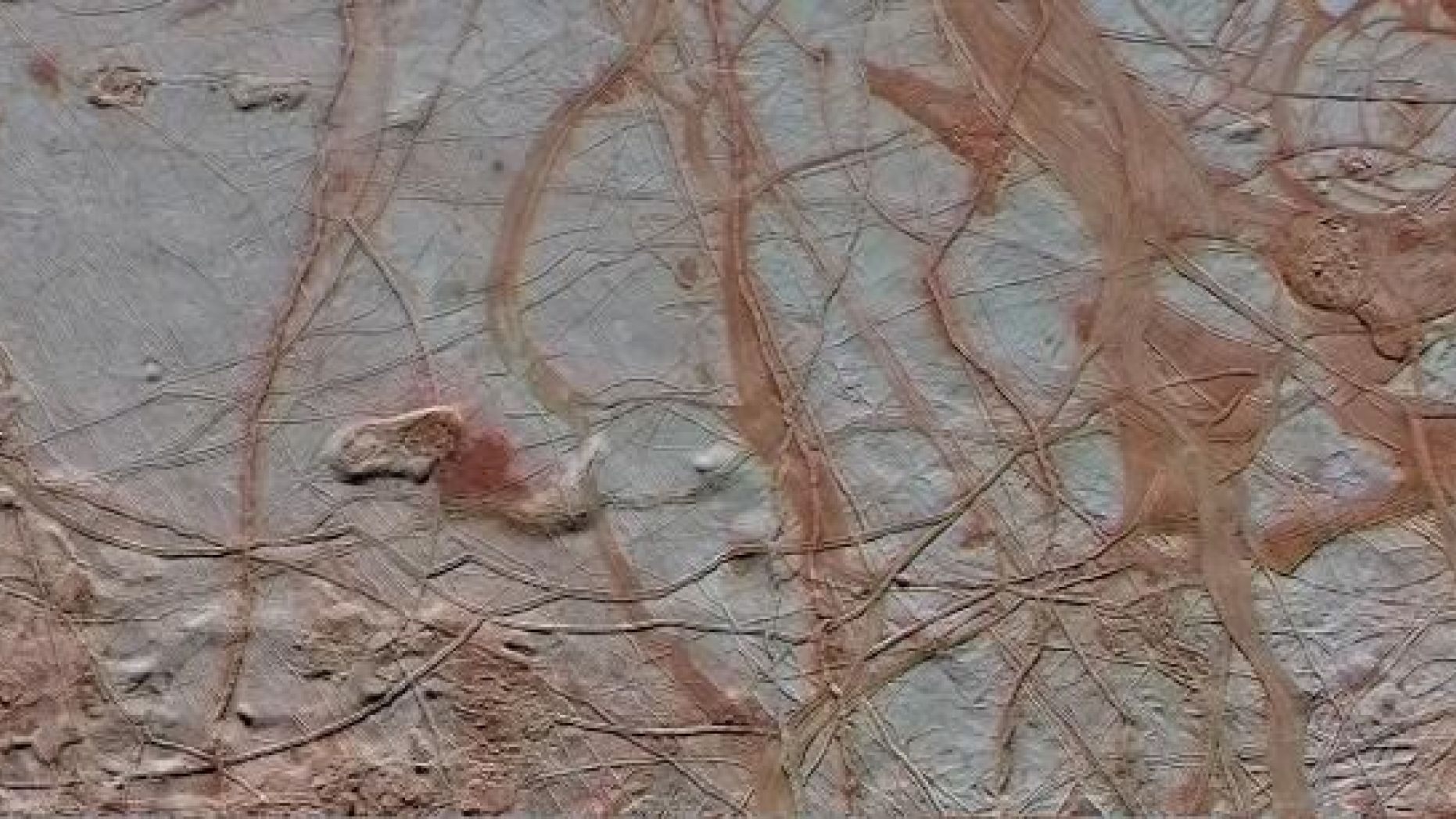Jupiter moon Europa’s possibly porous surface could doom a lander

Putting a lander down on Jupiter’s potentially life-supporting moon Europacould be even trickier than engineers had thought.
Europa’s surface may be extremely porous, so any probe that touches down there might run the risk of sinking into a sort of extraterrestrial quicksand, a new study suggests.
In the lab, study team members measured the reflectance properties of various configurations of aluminum oxide powder — a good analog, they said, for the material on the surface of bright, airless bodies such as Europa, which harbors an ocean of liquid water beneath its icy shell. [Jupiter’s Icy Moon Europa in Pictures]
They found that powder composed of very small particles with lots of space between them — material less dense than freshly fallen snow, team members said — shared several key reflectance characteristics with the actual Europan surface.
But the new study is far from the last word on the subject, study team members said.
“Of course, before the landing of the Luna 2 robotic spacecraft in 1959, there was concern that the moon might be covered in low-density dust into which any future astronauts might sink,” lead author Robert Nelson, a senior scientist at the Planetary Science Institute in Tucson, Arizona, said in a statement. “However, we must keep in mind that remote visible-wavelength observations of objects like Europa are only probing the outermost microns of the surface.”
NASA has Europa in its sights: The agency is developing a flyby mission to the icy moon, which is expected to launch sometime in the 2020s. This probe, known as Europa Clipper, will study the satellite’s buried ocean and assess its habitability using a variety of instruments.
Congress has also instructed NASA to get a lander down on Europa. The agency’s current thinking calls for launching a surface probe separate from Clipper.



 Creators of mankind
Creators of mankind Description of “Tall white aliens”
Description of “Tall white aliens” Where they came from?
Where they came from? About hostile civilizations
About hostile civilizations The war for the Earth
The war for the Earth “Tall white aliens” about eternal life
“Tall white aliens” about eternal life Video: “Nordic aliens”
Video: “Nordic aliens” Aliens
Aliens Alien encounters
Alien encounters The aliens base
The aliens base UFO
UFO Technology UFO
Technology UFO Underground civilization
Underground civilization Ancient alien artifacts
Ancient alien artifacts Military and UFO
Military and UFO Mysteries and hypotheses
Mysteries and hypotheses Scientific facts
Scientific facts


















